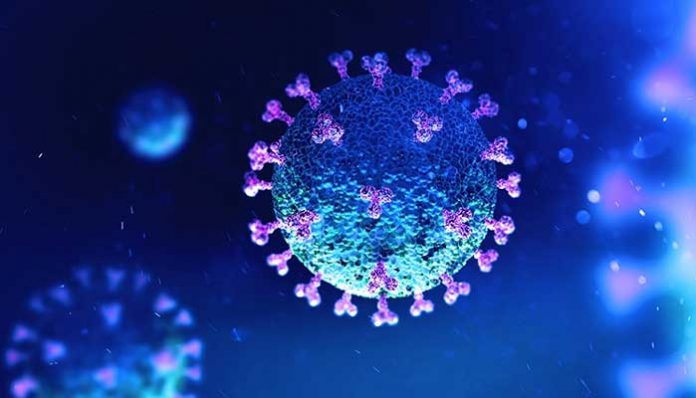GENEVA: People probably contracted coronavirus from a bat via an liaison animal, an international authority group to China determined in an article witnessed on Monday, with researchers all but ruling out a laboratory seep.
The intermediary compere assumption was considered “likely to very likely”, while the notion that the virus discharged from a laboratory was seen as “exceptionally unlikely”, corresponding to a copy of the long-awaited definitive statement obtained by AFP before its formal release.
Written by a group of World Health Organisation-appointed global specialists and Chinese counterparts, the report has been eagerly awaited ever since researchers exited China more than a month ago.
But it does not present conclusive answers on the ambiguity at the very heart of the deadly disease — how the virus that triggers the disease first leaped to humans.
COVID-19 has killed more than 2.8 million individuals globally in the 15 months since it appeared, pushing governments around the world to propose severe curbs that have pummeled the worldwide economy.
Britain on Monday offered a unique optimistic spot for Europe, a region still troubled by the virus, with stay-at-home instructions eased as swift vaccinations seemed to have propelled down infection rates.
In recent days, the European Union’s greatest economies — Germany, France and Italy — have been among states to reimpose curbs, while the EU’s vaccination programme is stuck in a blame game over resources.
There was better news update for Africa, as up to 400 million of Johnson & Johnson’s single-shot vaccine are likely to start coming on the region later this year.
‘Beyond enthusiastic’
The specialist information on COVID-19 has had an unsettled birth, with periodical impediments adding to the hold-ups and diplomatic bickering that dogged the WHO´s efforts to get specialists into Wuhan — the city at the centre of the preliminary outbreak.
They came on January 14 this year, more than a year after the first cases emerged.
In that time, vaccines have presented a spark of hope and permitted some states to arise from more than a year of severe anti-virus measures.
People in Britain scurried to puddles and parks on Monday to enjoy fresh liberties, with the authority letting small groups to congregate and sporting activities to continue.
“We haven´t go swimming since January 5 so we were beyond enthused to come back and get back into the water,” swimmer Jessica Walker told AFP at a pool in London.
With a small number of verified cases, some African economies have nonetheless been limped by coronavirus curbs, making Johnson & Johnson´s revelation of a contract with the African Vaccine Acquisition Trust (AVAT) greet.
AVAT has a preliminary agreement for 220 million doses of the single-shot vaccine — told by the company to guard against regional variants — with J&J affiliate Janssen Pharmaceutica, with an option on 180 million additional.
Meanwhile, the manufacturers of the Russian-developed Sputnik V shot reached an agreement with a Chinese company to make more than 60 million doses, with the jab’s backers highlight an “increasing demand” for the medication.
Blame game
With Germany pushed to intensify restrictions months ahead of a widespread election that will see voters elect a successor to veteran Chancellor Angela Merkel, hard-contested policy battles have exploded into the public arena.
Merkel on Sunday called out some regional chiefs in a TV talk for lacking to enforce “emergency brake” restrictions, including the head of her CDU party Armin Laschet, who runs North Rhine-Westphalia state.
“Everyone wants the number of infections to go down and everyone has taken the appropriate measures for their state,” Laschet shot back.
Neighbouring France is also eyeing a potential nationwide shutdown if regional restrictions imposed just over a week ago fail to slash infections.
With 28,000 people hospitalised — not far short of earlier peaks — “the outlook is worse than frightening”, senior intensive care doctor Jean-Michel Constantin said in an interview Monday.
Not everything responded.
While societies continue to battle the effects of the pandemic, there is still little clarity over its origins.
The WHO report left “not everything answered” but was “surely a good start”, Dutch virologist and team member Marion Koopmans tweeted.
Experts believe the SARS-CoV-2 virus that causes the Covid-19 disease originally came from bats.
The report authors offered a ranked list of possible ways it could have made the jump to humans, calling a direct leap “possible to likely” and a scenario with an intermediate animal “likely to very likely”.
Experts named candidates including mink, pangolins, rabbits and ferret badgers.
Beijing´s pet theory that the virus did not originate in China at all but was imported into frozen food was judged “possible” but very unlikely.
Meanwhile, claims promoted by former US president Donald Trump´s administration that the virus escaped from a research lab were judged “extremely unlikely”.
But in Geneva on Monday, WHO boss Tedros Adhanom Ghebreyesus stressed that “all hypotheses are open, from what I read from the report… and warrant complete and further studies”.















